All products featured are independently chosen by us. However, SoundGuys may receive a commission on orders placed through its retail links. See our ethics statement.
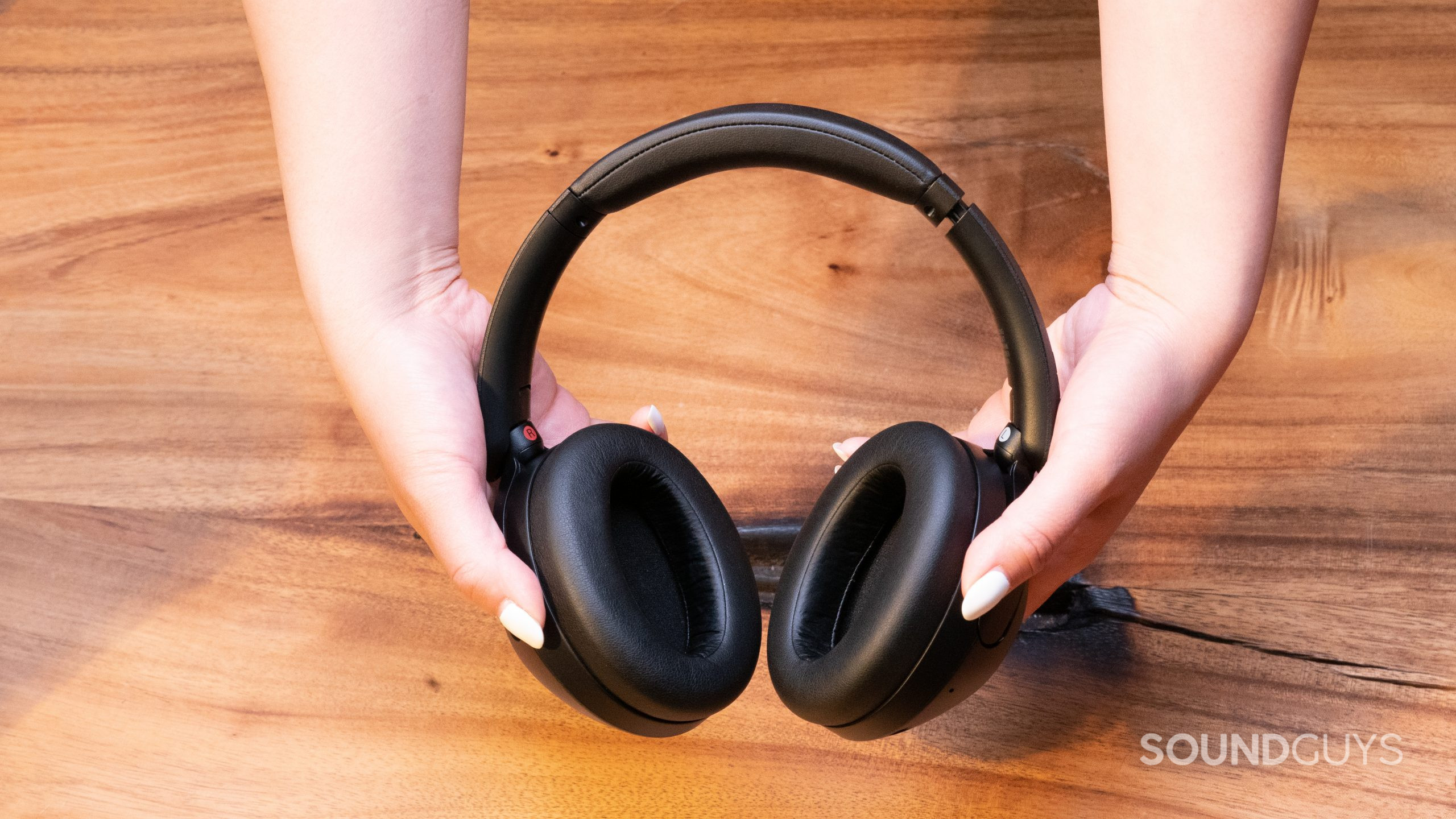
Sony WH-XB910N review
May 23, 2025
Sony WH-XB910N
The Sony Extra Bass line of headphones has been a mainstay for a couple of decades, and generally speaking, Sony holds up its end of the bargain by supplying a lot of bass. This is great for bass heads, but what about the rest of us? We tested the Sony WH-XB910N for two weeks to see how it performs, and there are plenty of other features that could draw you in. Maybe this active noise canceling (ANC) headset is a sleeper hit with the right EQ.
- This review was updated on May 23, 2025, to note the headphones have been superseded by a new model.
- This Sony WH-XB910N article was updated on May 2, 2024, to ensure the timeliness of the information within.
- This article was published on November 10, 2022.
Bass heads will be pleased with the default frequency response from these Sony headphones, as well as a few variations on bass emphasis in the EQ presets. People looking for noise canceling headphones with an optional hardwired connection will like the flexibility of the WH-XB910N. Finally, anyone looking for a cheaper alternative to premium noise canceling headphones will like the performance for the price if they don’t mind doing some EQ.
What is it like to use the Sony WH-XB910N?
Looking quite a bit like the former flagship WH-1000XM4 and XM3 before it, along with its sibling, the WH-XB900N, the latest WH-XB910N, won’t win any awards for aesthetic innovations. With that said, it looks stealthy and discreet, save for the raised grey Sony logos adorning each side of the headband — keeping it to just one side might’ve looked nicer. Our test model is the black colorway, or you can grab navy. The housing is comprised entirely of plastic with vinyl for the ear pad covers, and the ear cups flip up toward the headband for storage. Sometimes, I pinch my fingers when releasing the headphone hinges, but Sony thought of everything; buried in small text in the warning section, it says to watch your finger.
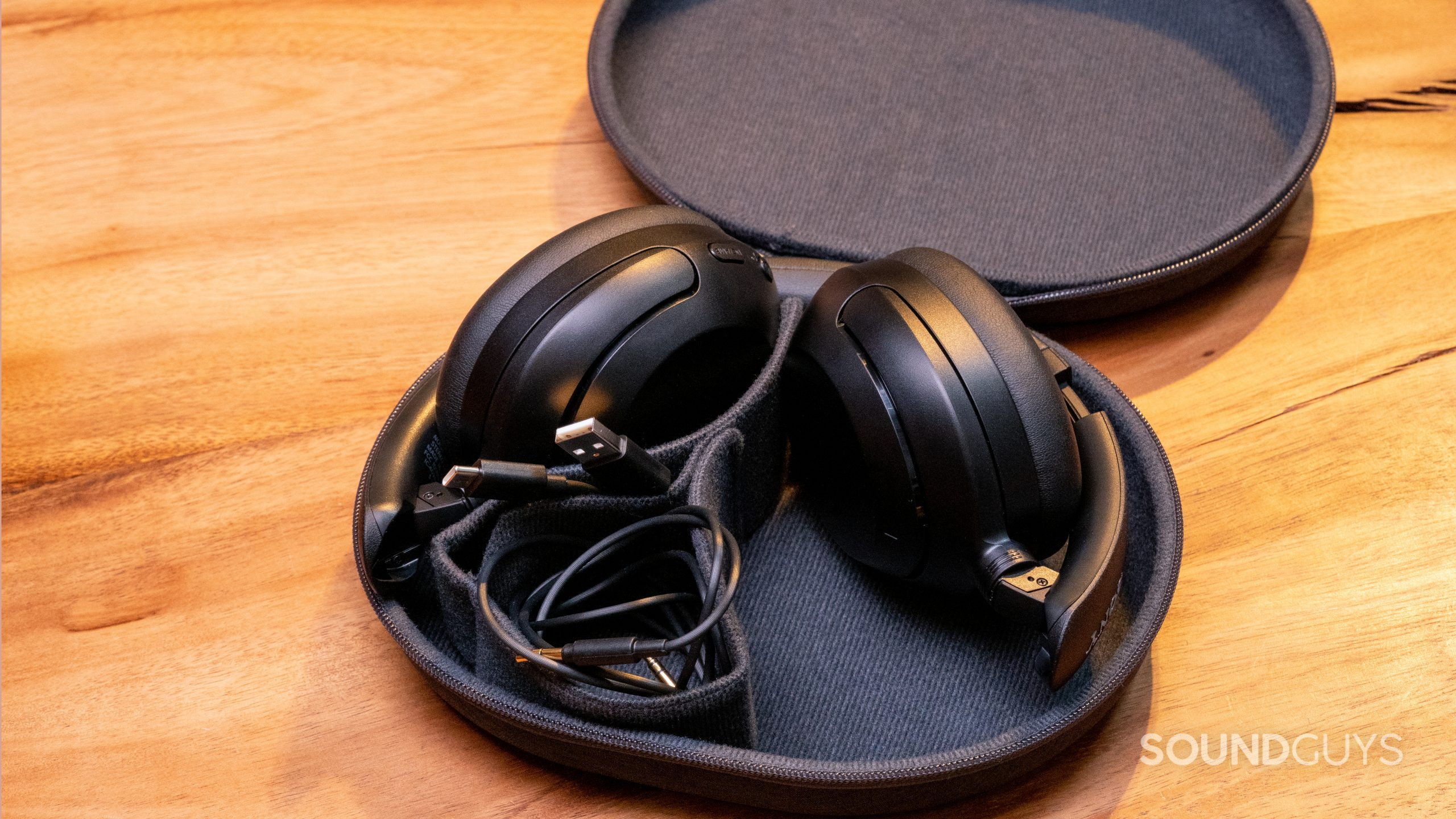
Weighing 252g, the WH-XB910N feels comfortable, and the ear padding has generous space for most at approximately (65mm x 40mm) to fit your ears. Inside the housing sits a 40mm dynamic driver, typical for over-ear headphones. Clamping force rates as sufficient for keeping the headphones secure but not glued on tight. When I eat while wearing the headphones, the pressure can hit a painful nerve where my jaw meets my neck just below the ear lobe. It’s not a problem at all if I avoid eating while wearing the headset, though.
The package includes a zip carry case made of fabric and a thin, semi-hard shell. It’s good enough to stow away the headset and save it from scrapes, but it won’t save the WH-XB910N from crushing under any weight. You also get a USB-C cable and a 1.2m headphone cable terminating in a 3.5mm jack with the WH-XB910N, meaning you have some flexibility between wireless and wired listening.
How do you control the Sony WH-XB910N?
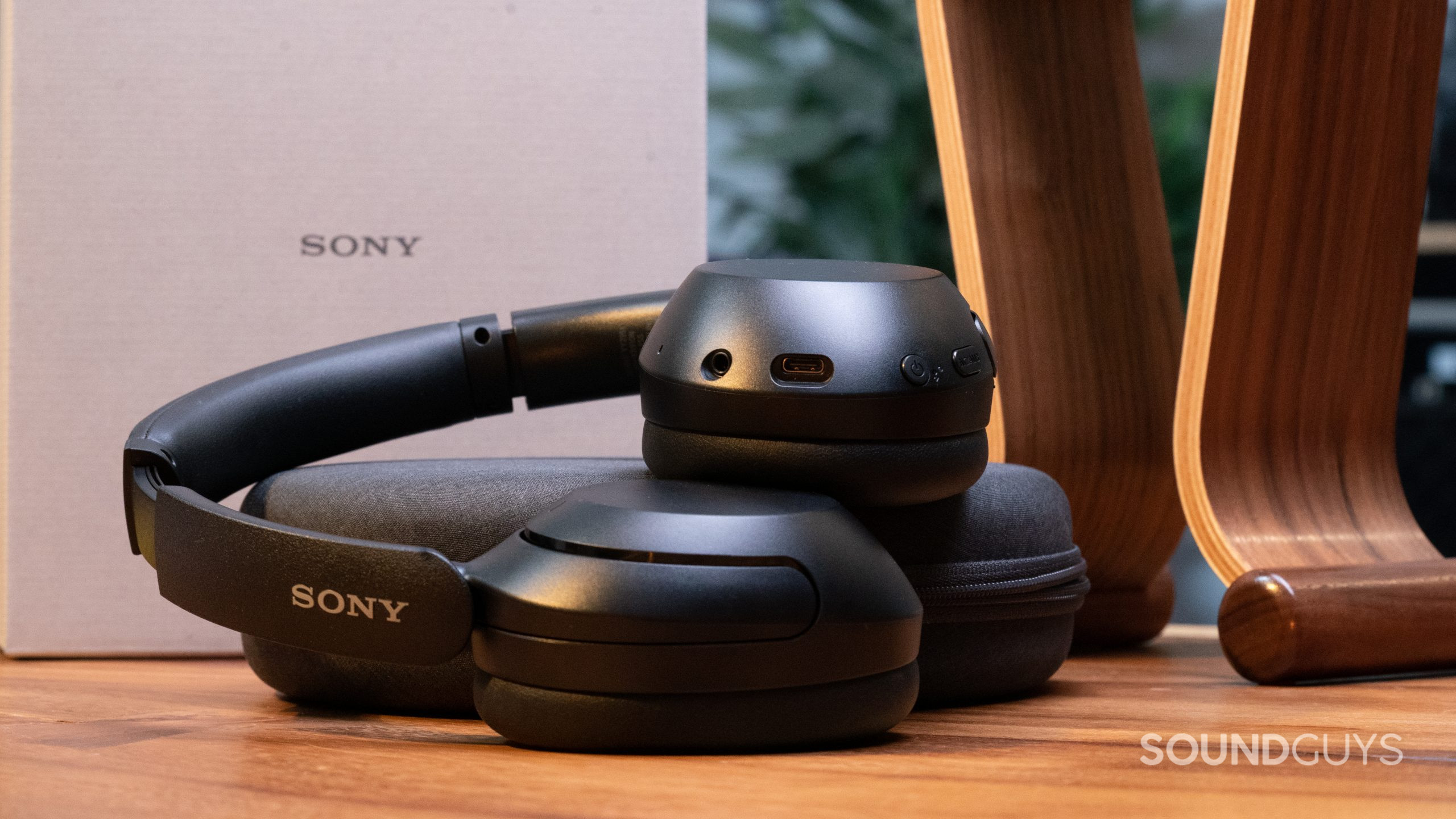
To control the headset, you need to memorize a combination of touch controls for the right ear cup housing and tactile button commands on the underside of the left ear cup.
| ACTION (touchpad) | FUNCTION |
|---|---|
Swipe up | Volume up |
Swipe down | Volume down |
Swipe forward | Track forward |
Swipe back | Track back |
Hold (center) | Voice assistant |
Double tap center | Pause / resume |
Cup hand | Ambient sound passthrough |
The touch controls seem like a great idea, but the touch panel’s sensitivity is all over the place. Sometimes, it registers my commands and other times, it’s like I never touched it. To adjust the volume, you basically draw a line on the flat of the right ear cup housing, up or downwards. Sometimes, the WH-XB910N interprets my gesture as a skip-forward command — pretty annoying. It’s easier to just use my device volume control. Skip forward and skip back work more predictably, and while pause works, play doesn’t always work.
| ACTION | ANC/AMBIENT | POWER |
|---|---|---|
| ACTION Single press | ANC/AMBIENT Cycle through listening modes | POWER |
| ACTION Hold (2s) | ANC/AMBIENT | POWER Power on |
| ACTION Hold (5s) | ANC/AMBIENT | POWER Bluetooth pairing, must being from powered off mode |
I also accidentally trigger the virtual assistant (press and hold on the pad) any time I put the headphones on or take them off. Luckily, you can turn that off in the app. Cupping your hand over the right ear cup temporarily switches your headset into Ambient mode. This is one of the best quick mode switches I’ve experienced because, in a moment when someone says something to you, it’s easier to cup your hand over the ear cup than to reach for a button you have to recall by muscle memory.
Should you download the Sony Headphones Connect app?
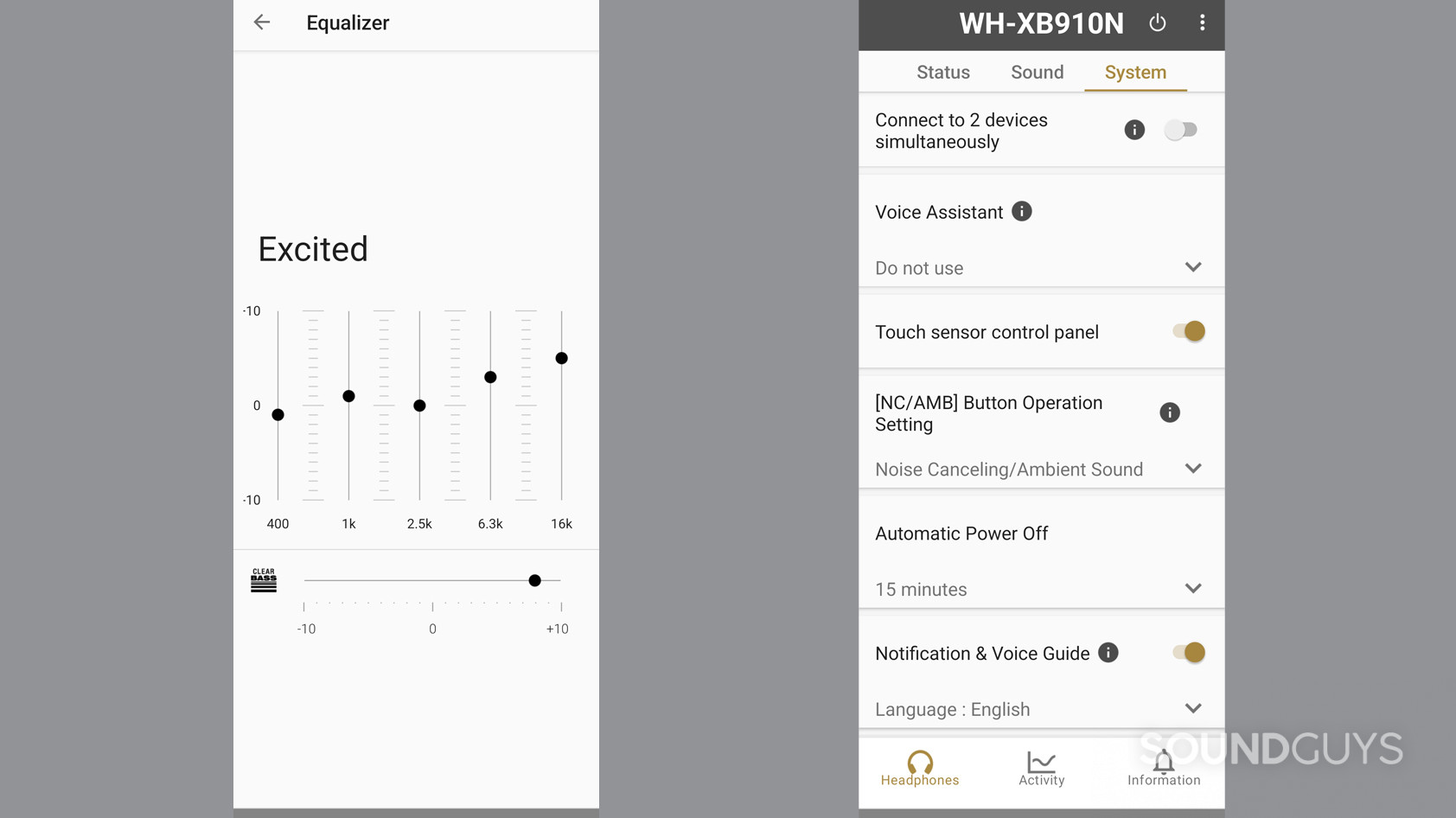
Yes, you should download the accompanying Headphones Connect app (iOS/Android). Immediately after connecting to my device, the app initiates a 35-minute update to version 1.2.2. You can adjust touch commands, use 360 Reality Audio (surround sound), adjust noise canceling (including Wind Noise Reduction), and access my favorite, an equalizer.
What’s Adaptive Sound?
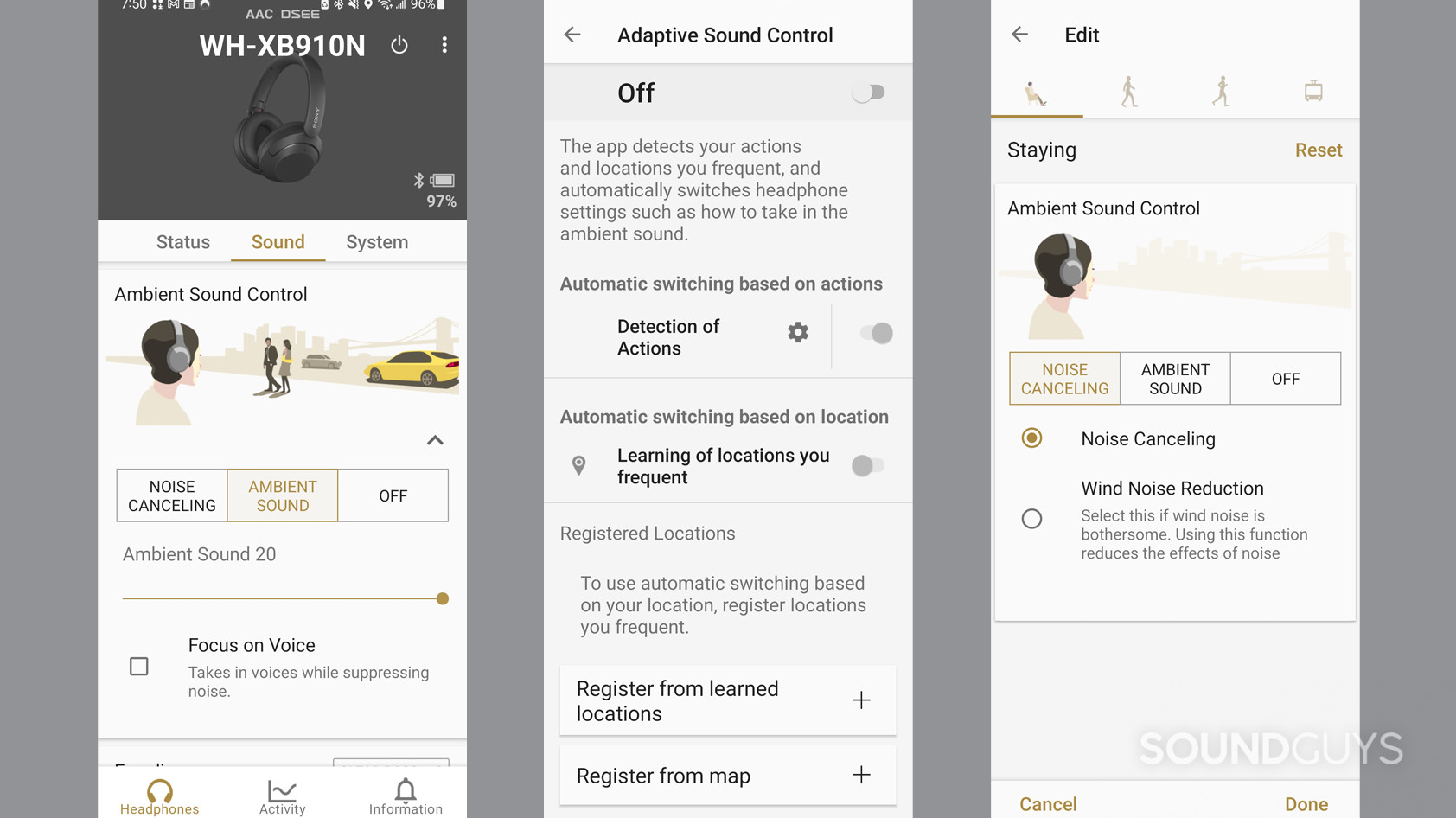
The term Adaptive Sound has been used with various definitions by different companies. Google uses the term for the Pixel Buds A-Series to mean the audio automatically adjusts in relation to your environmental noise. Sony means that if you give a lot of location permissions, it’ll study your habits and determine which settings, such as Ambient or ANC, you usually want.
It works similarly to the Sound Zones Sennheiser has for the MOMENTUM True Wireless 3, although a little more clunky in execution. If you enable the feature, you also end up with a constant notification that Adaptive Sound is on. I don’t mind the notification if it disappears, but this one sticks around.
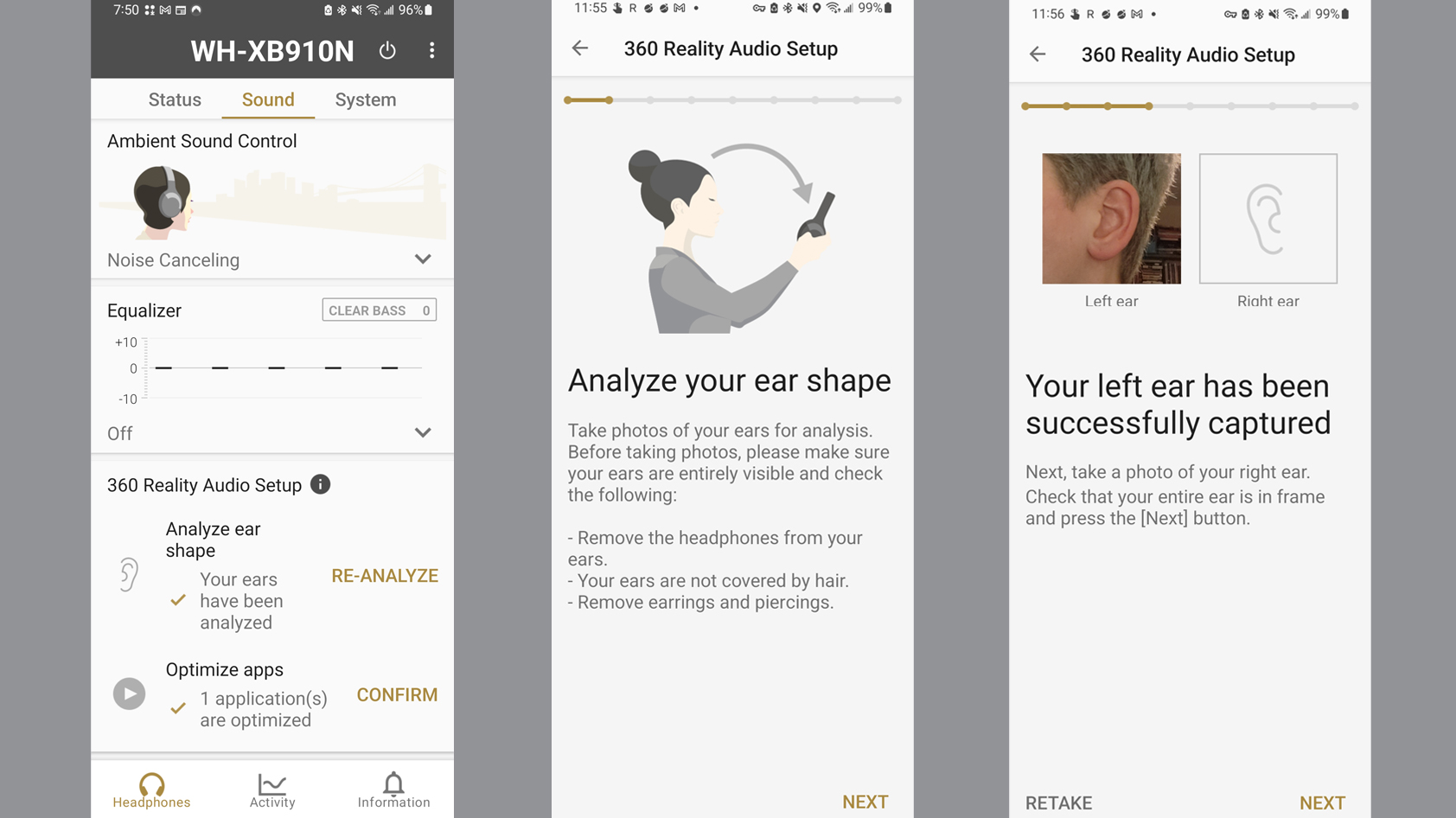
First off, keep in mind that 360 Reality Audio is limited to services like 360 by Deezer, Amazon Music, Artist Connection, nugs.net, PeerTracks, and Tidal. It also relies on the capabilities of your device and what’s actually available mixed in surround sound on those services. Using the Headphones Connect app, you open the “Analyze ear shape” tab under the 360 Reality Audio Setup header. Here, you take photos of each ear and yourself head-on.
Once you’ve had your ears analyzed and have a compatible service on your device, tap “Optimize,” and it’ll initiate a walkthrough. Sample audio will play for you to hear the difference between standard stereo and surround sound. In the case of Deezer, you have to download a separate 360 Audio app to listen to music in surround sound, which seems a bit tacked on. Who wants to open a different app to listen to 360 Reality Audio other than normal Deezer?
As it stands, the selections compatible with Sony 360 Reality Audio are so limited that in the 360 Audio app for Deezer, you can’t actually search. Instead, you have to stick to recommendations on the home page or scroll through an alphabetized list of artists. Unsurprisingly, most of these artists are pretty mainstream, or at least Sony artists. I find a handful of tracks to my taste, like Up Granville by Peach Pit. The surround sound is a neat trick, better implemented on some songs than on others. It seems more like a novelty at this point, but I’m sure people said the same of stereo mixes when mono was de rigeur.
What Bluetooth codecs does the Sony WH-XB910N support?
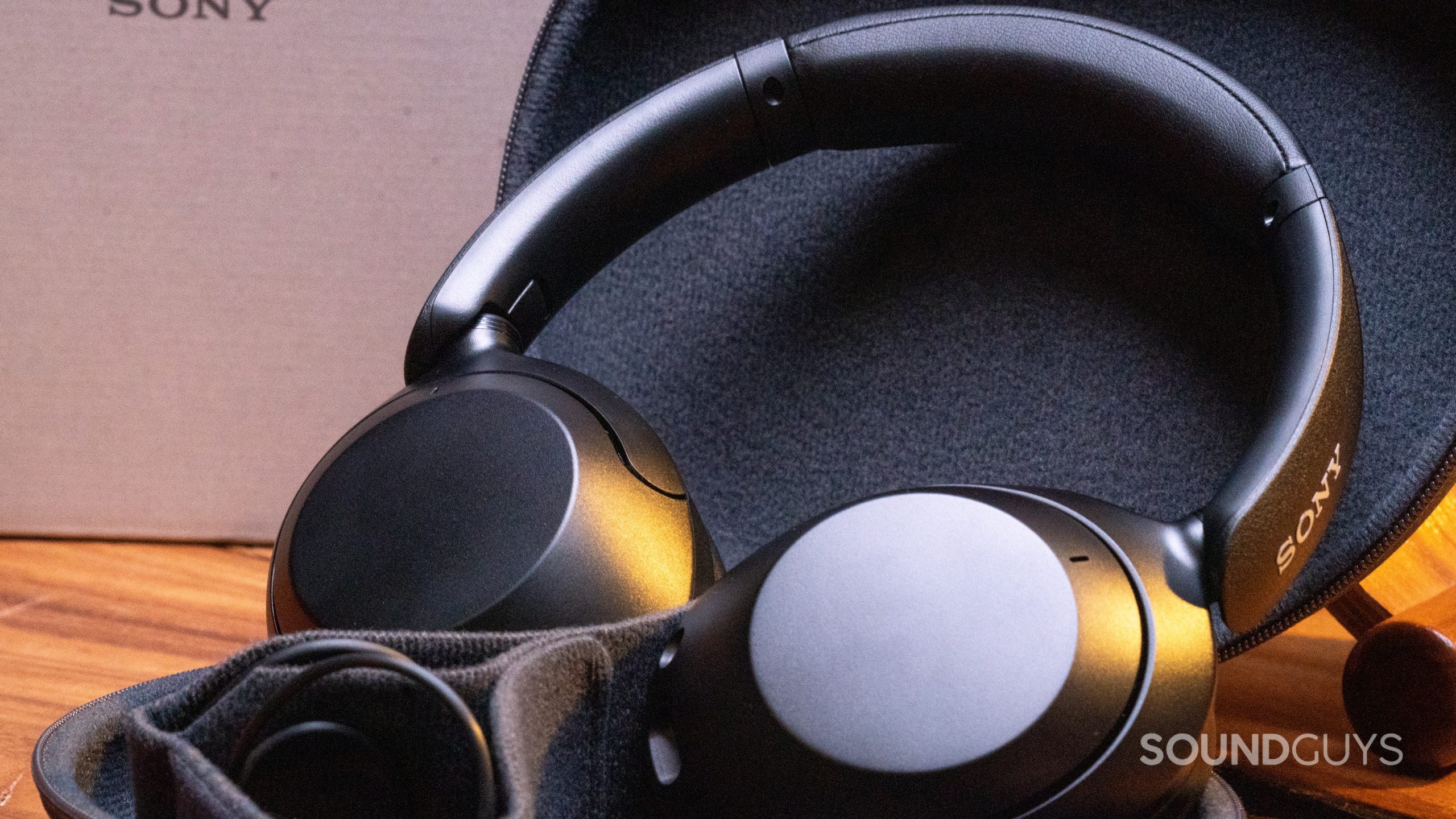
Onboard the WH-XB910N, Sony supplies the usual AAC and SBC Bluetooth codec support. For Android users, there’s also LDAC support to access better quality audio than AAC or SBC (on Android). By default, the WH-XB910N runs on AAC with my Samsung Galaxy Z Flip3. The Sony Headphones Connect app allows you to prioritize connection stability or audio quality. For whatever reason, both settings result in an AAC Bluetooth codec connection. Going through my phone’s Developer options menu, I can manually switch to LDAC for music playback, but in the app, I cannot get LDAC to work: it flashes as LDAC briefly and then settles on AAC.
There’s nothing wrong with AAC per se, but LDAC is preferable for Android devices, whereas Apple users will get the best results from AAC. But as you’ve read before, the headphone jack is still the best choice for audio quality. So, when in doubt, use the included 3.5mm headphone cable Sony packages with the WH-XB910N.
When you first get the WH-XB910N and turn it on (by pressing the power button), it’ll automatically enter pairing mode. It indicates this by flashing the blue LED twice rapidly. In contrast, if it’s just on and not in pairing mode, it’ll flash blue at a steady interval. Sony could have made this clearer by having the LED flash blue and orange. From here, it should show up in your Bluetooth settings, select it, and a prompt to download the Sony Headphones Connect app appears.
Now, if for some reason yours doesn’t enter Bluetooth pairing mode fresh from the box, or you want to connect to a different device, you have to enter pairing mode from power off. If you try to enter pairing mode when the WH-XB910N is already turned on, you’ll just end up turning off the headset. This is frustrating, especially when Sony does little to make it obvious you have to do this immediately when you power on, but it seems to be a trending pairing method.
- Enable Bluetooth on your device.
- With the headphones turned off, press and hold the power button.
- Continue to hold the power button longer than you would normally to just turn it on, about 5 seconds.
- Notice the LED light next to the button begins to rapidly flash blue in couplets. Now you’re in pairing mode, let go of the power button.
- Select the device as you normally would in your Bluetooth settings, or if you have the Sony Headphones Connect app already, you can find it there as well.
How long does the Sony WH-XB910N battery last?
Our standardized battery testing with ANC On shows the WH-XB910N lasts 37 hours and 9 minutes. This result is very good, and Sony suggests the headset can reach 50 hours without ANC powered on. It charges via USB-C, but if you’re in a jam with a dead headset, use that headphone jack.
The WH-XB910N has a 10-minute fast charge feature, yielding 4.5 hours of audio, though Sony does not specify if that’s with or without ANC.
How well does the Sony WH-XB910N cancel noise?
Loading chart ...
The WH-XB910N cancels noise effectively, and although the occasional super-low rumble might sneak through, the performance is pretty comprehensive across the frequency spectrum. A few years ago, the ANC and isolation performance on the WH-XB910N would have been flagship-worthy. In fact, the ANC is similar to the elderly (in tech years) Sony WH-1000XM3. In other words, the WH-XB910N attenuates low-frequency noises at 100Hz by over 20dB, rendering them one-quarter of their loudness. This ANC tapers off quickly in sub-bass frequencies, but it’s still a respectable effort for a mid-tier headset.
Meanwhile, the WH-XB910N passive isolation does a good job at attenuating high frequencies, and 8kHz frequencies are one-sixteenth as loud as they’d sound without the headset on. Typically, isolation does the heavy lifting for high-pitched incidental sounds, while ANC acts best at filtering out repetitive low sounds like air conditioner units.
Transparency mode, Ambient Aware, Ambient Sound, or Awareness mode (companies have a lot of different names for the same thing) all use mics to pipe in the sounds of your environment. The purpose is to keep you aware, say if someone talks to you while you’re listening to music. It can be quicker than hitting pause and removing your headphones.
How does the Sony WH-XB910N sound?
Loading chart ...
Unsurprisingly, the headphones called “Extra Bass” do sound bassy; Sony WH-XB910N comes in hot with a 20dB exaggeration at 40Hz, compared to our headphone preference curve. Below 200Hz, the frequency response drastically increases in volume topping off at 30Hz at about 20dB louder than our ideal. Having the greatest volume around 30Hz gives the headset that rumbling sensation, but honestly, not terribly much musically happens that low. It helps keep the bass emphasis less insane sounding than the chart makes it look. It’s still too loud relative to the other frequencies.
In the mids, the WH-XB910N under-emphasizes between 200Hz and 1000Hz, meaning a lot of fundamentals will sound comparatively quiet. The highs are imperfect, but as this is all relational — the approximately 5dB exaggerations between 1kHz and 2kHz and at 6kHz to 8kHz would probably make this headset seem trebly if it weren’t for the cartoonish bass response. In reality, everything but the low end sounds kind of too quiet; sometimes, it’s fun, and other times, it’s unpleasant. This directs us to the purpose of our target curve, which seeks to make everything sound more or less good.
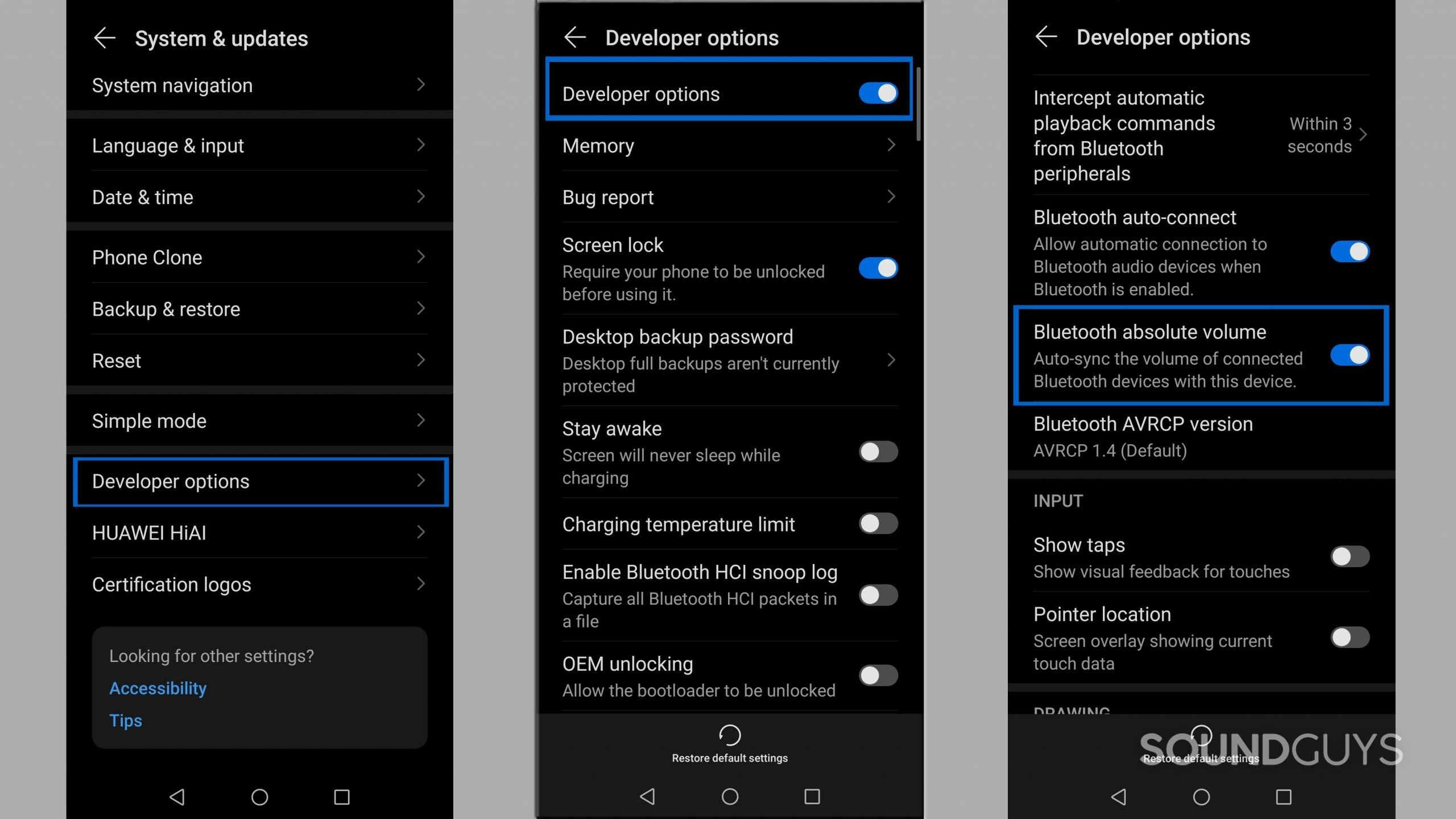
If changing the codec in the Sony Headphones app does not work, try the following. Your Android settings may look a little different, but the gist of accessing Developer settings is to:
- Go to Settings
- Go to About phone
- Tap on where it says “Build number” seven times
- Tap the back arrow
- Go to System & updates
- Scroll down and select “Developer options”
- Enable the “Developer options” toggle
- Now, tap to open the Developer options menu found in Settings
- Scroll to Bluetooth audio codec.
- Tap Bluetooth audio codec and select LDAC
Lows, mids, and highs
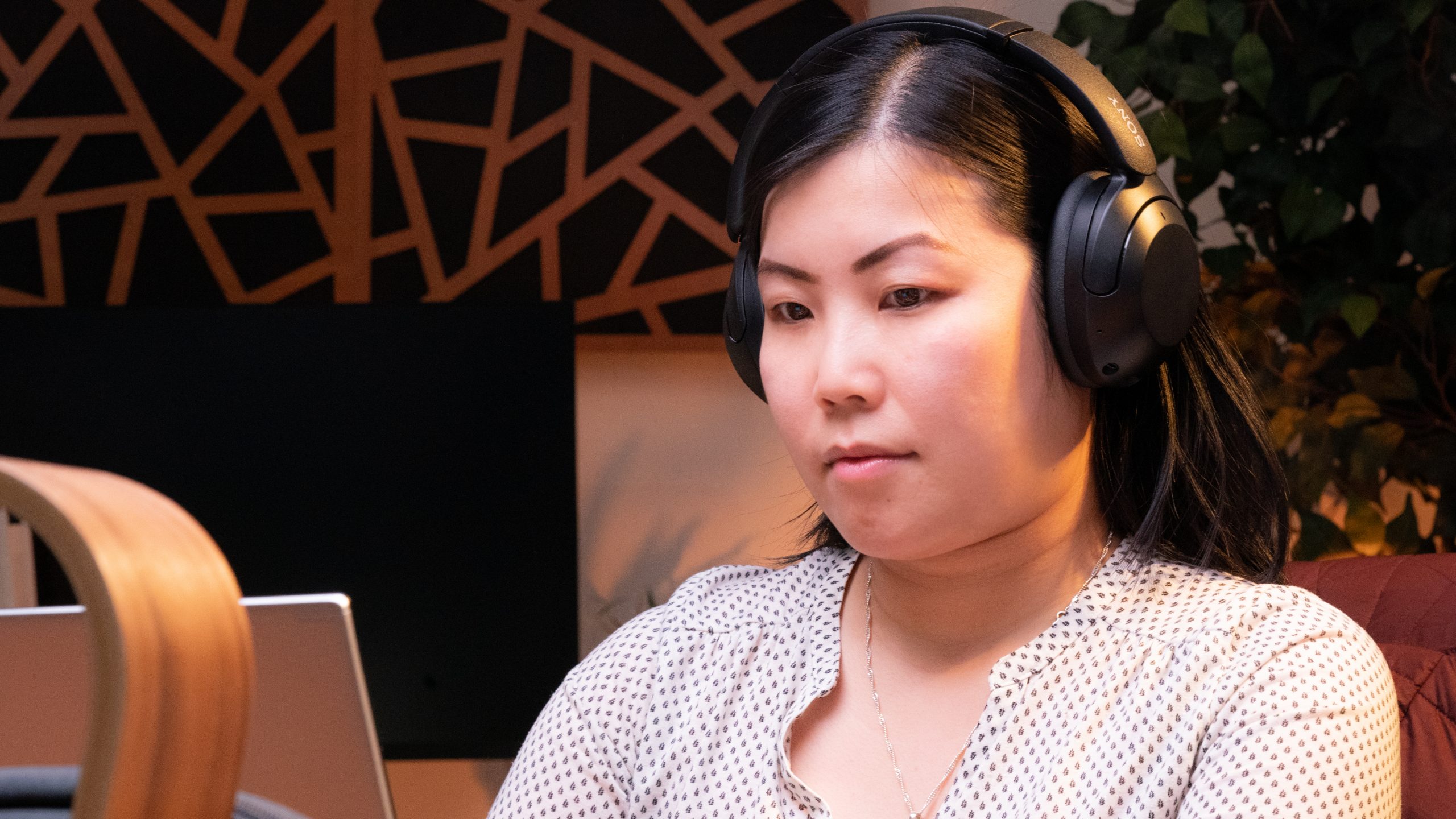
Putting on 90s Australian indie band The Cloud’s track, Souleater, it’s immediately clear that the bass guitar and kick play too loudly. Rhythm guitar, snare, and hi-hat cymbals are audible but largely overwhelmed by bass, trebly lead guitar, and the vocals.
Without EQ, the WH-XB910N makes you want to crank the volume to better hear everything besides bass.
Jodi Phillis and Trish Young’s vocals are at an okay volume, a little quiet but not horribly so, but their voices sound off. In the highs, the WH-XB910N exaggerates where it shouldn’t and under-emphasizes where it should. Combine that with too much bass, and the singers just sound a bit muffled. At the bridge, beginning at 1:25, when it’s just vocals, drums, bass guitar, and quiet guitar, the disproportionate bass is most obvious. The vocals and building tension ought to be highlighted here, but instead, the bass guitar and kick overwhelm everything.
Listening to the default settings of the WH-XB910N will make it very tempting to turn up your volume to hear everything else. Thankfully, there’s an EQ for that to save you from inflicting hearing damage. There’s nothing wrong with wanting some extra bass, but this frequency response is like ordering extra cheese on your pizza and getting so much cheese you can scarcely taste the toppings, sauce, or crust.
Loading chart ...
You should probably EQ the WH-XB910N. If it weren’t for the equalizer feature in the Sony Headphones Connect app, the default frequency response would make the WH-XB910N pretty limited in utility for all but the most dedicated bass heads. Fortunately, Sony includes two slots for custom EQ settings in addition to a slew of presets — many of which are also extremely bassy.
Because the default frequency response sounds wonky and the app’s equalizer has its limitations, you won’t manage to dial in the suggested EQ exactly. To start with, the EQ suggests turning down the 30-40Hz range by 25dB, while every slider in the app only turns up or down a maximum of 10dB in either direction. The equalizer itself has sliders for “Clear Bass,” 400Hz, 1kHz, 2.5kHz, 6.3kHz, and 16kHz. Some of these frequencies don’t land exactly where you want to make adjustments.
My advice: turn down the “Clear Bass” last because Sony doesn’t label which frequencies specifically this slider affects, but it says “bass,” so you’ll probably want to reduce it significantly. Most of the EQ will approximate our ideal but try to keep alterations relative to each frequency slider. You’ll likely turn up the 16kHz a couple of decibels and everything else down.
With the Headphones Connect app’s equalizer, you won’t get this headset to perfectly match our suggestion, but it will sound much better even with an imperfect EQ. The equalizer transforms the WH-XB910N from unpleasantly bassy to decent. Ambitious audio enthusiasts can also give a third-party equalizer app a shot if the simplistic option doesn’t satisfy.
Loading chart ...
Yes, you can use the WH-XB910N like an ordinary pair of passive, wired headphones. Of course, you can’t modify EQ or use ANC/Ambient modes with the headset turned off. You’ll also be stuck with the passive frequency response, which is quite different from the one you’ll get with the power on. It’s surprisingly “flat” compared to the extra bass tuning when turned on.
How good is the microphone on the Sony WH-XB910N?
Loading chart ...
The Sony WH-XB910N microphone suffers from the same problem as most mics that aren’t in front of the mouth — reduced high frequencies — consequently, you might sound a little dull or muffled, depending on your voice.
While voices sound fine in ideal conditions, the mic struggles to attenuate noise caused by street sounds and wind. In the case of wind, the WH-XB910N can sometimes cut out your voice briefly when filtering out wind noise. Let us know what you think below.
Sony WH-XB910N microphone demo (Ideal conditions):
Sony WH-XB910N microphone demo (Street conditions):
Sony WH-XB910N microphone demo (Windy conditions):
How does the microphone sound to you?
As of October 15, 2022, the vast majority of voters (about 83%) have split the vote between “okay” and “good,” which is in line with our expectations for this headphone tier.
Should you buy the Sony WH-XB910N?
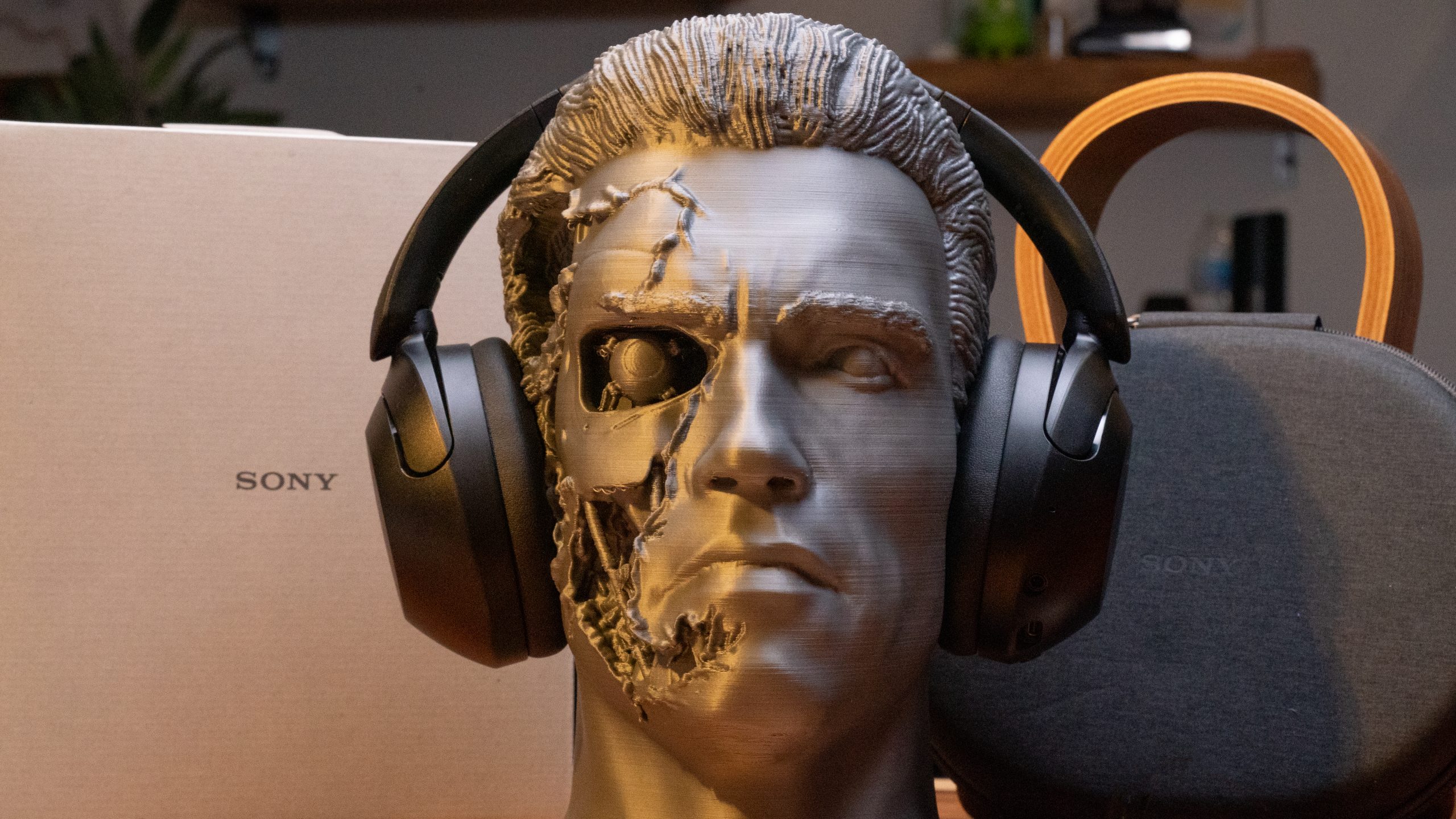
No. Unless you find this at a thrift shop or on deep discount, the Sony WH-XB910N has been superseded by the Sony ULT WEAR. The newer headphones have improved sound quality, ANC, and features at a reasonable price point.
Only pick these up if you find a bargain.

What should you get instead of the Sony WH-XB910N?
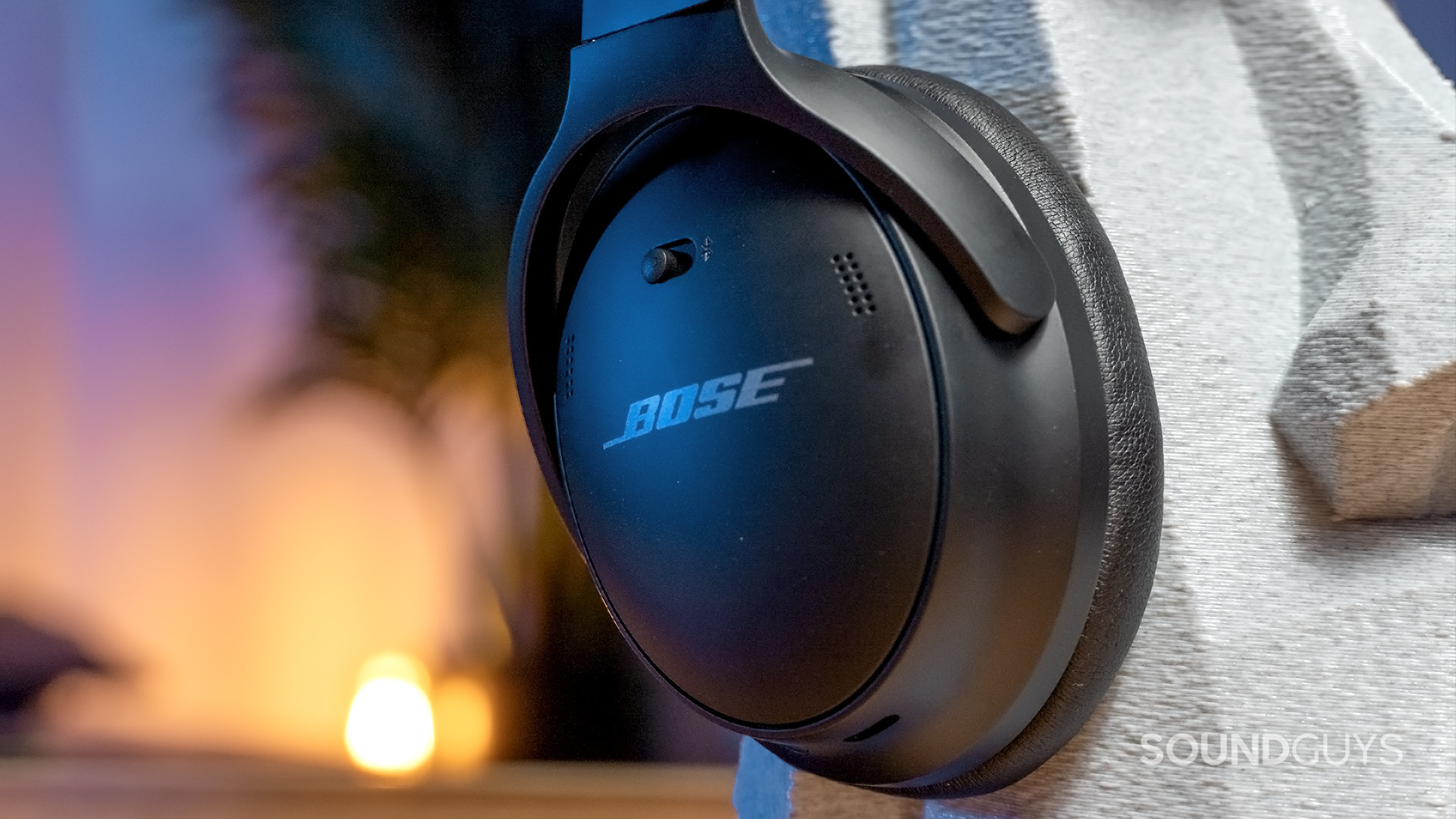
The market is pretty full of ANC headphones. If you want some of the best ANC out there, you have to pay more for the Sony WH-1000XM5 or the Bose QuietComfort 45. Incidentally, both will improve with some EQ, with the Bose getting close to our target with the right settings. Noise canceling is strong, and both headsets feel comfortable. The WH-1000XM5 (for $387 at Amazon) has the same codec selection as the WH-XB910N, while the QuietComfort 45 supports just SBC and AAC (along with wired playback). You can find the QC45 for $279 at Amazon.
Of course, if brain-rattling amounts of bass are considered an asset, the next step is to check out the Skullcandy Crusher ANC 2. These headphones have direct control over the “crusher” tuning with a dial on the headphones to turn up or down the low-end volume, which peaks at roughly 45Hz. They’re pretty comfortable to wear as well, which is great for $229.99 at Manufacturer site.
Maybe you’re wondering if we can recommend another bassy headset with ANC, so yes, check out the House of Marley Positive Vibrations XL ANC. It deviates from our ideal frequency response, but it does supply a good amount of bass and surprisingly good noise cancelation. It fits differently than the WH-XB910N with more of a grip and weighs a little more with a sturdier aluminum ear cup construction. Prices fluctuate considerably, but it’s usually around the same price, you can grab it for $142 at Amazon.
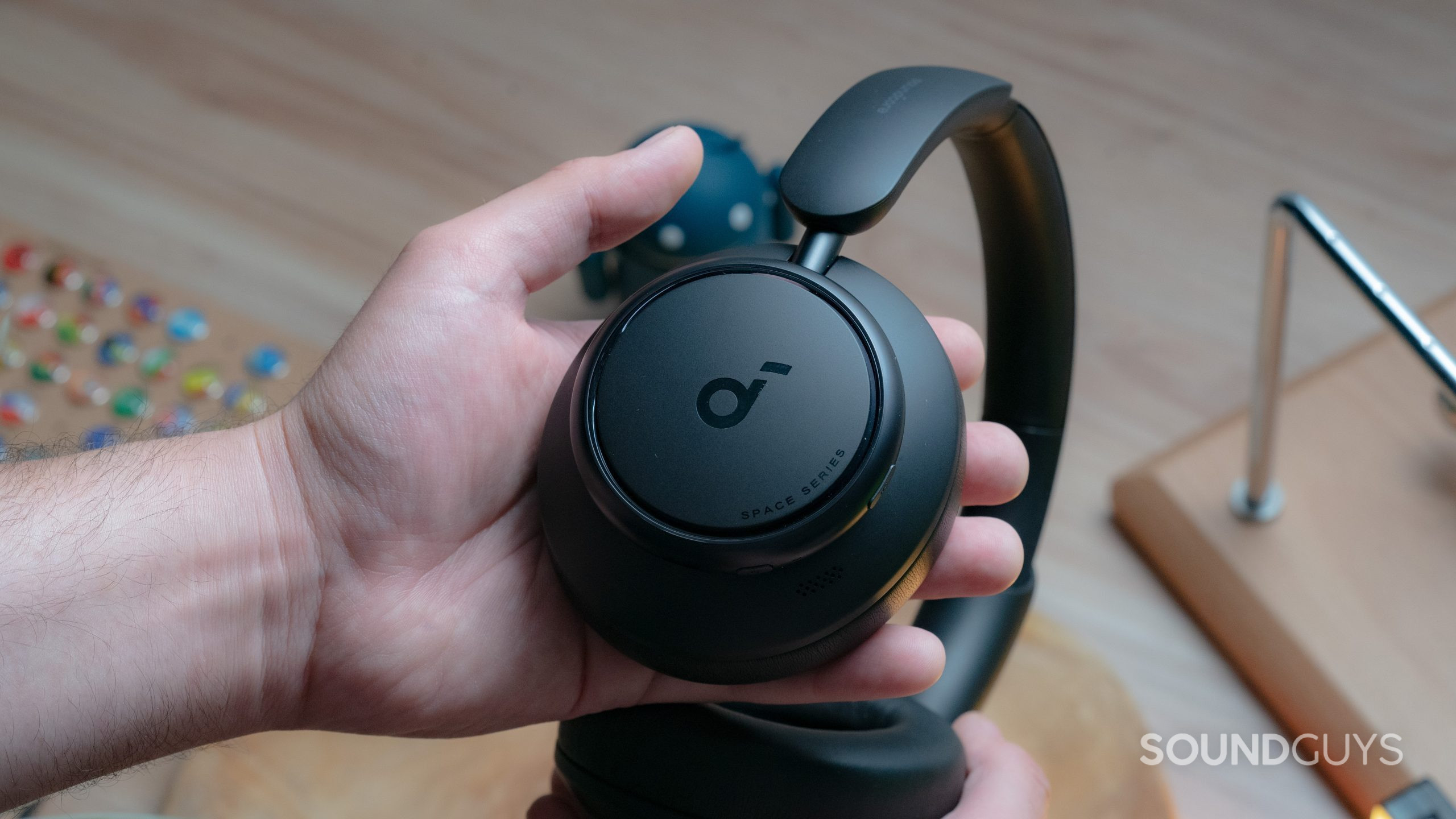
You can also check out the Anker Soundcore Life Q35 and the Anker Soundcore Space Q45 headphones. Both are bass-focused, with the same suite of codecs as the Sony WH-XB910N and optional wired connectivity. ANC is pretty comparable to the WH-XB910N, and the included Soundcore app helps you to EQ the headphones. If you plan to handle calls, the Soundcore Space Q45 (at $149 at Amazon) edges ahead with the better mic, but if music and ANC is your aim, the Soundcore Life Q35 is cheaper selling for $99 at Amazon and they’re similar enough otherwise.
Lastly, the Monoprice BT-600ANC undercuts virtually everyone selling for $84.99 at Amazon. The look is quite similar to Sony’s offerings, and the noise canceling is excellent. You lose out on equalizers, but the bass response is definitely loud enough. It has aptX HD as one of its codecs, which is a boon for Android users, too.
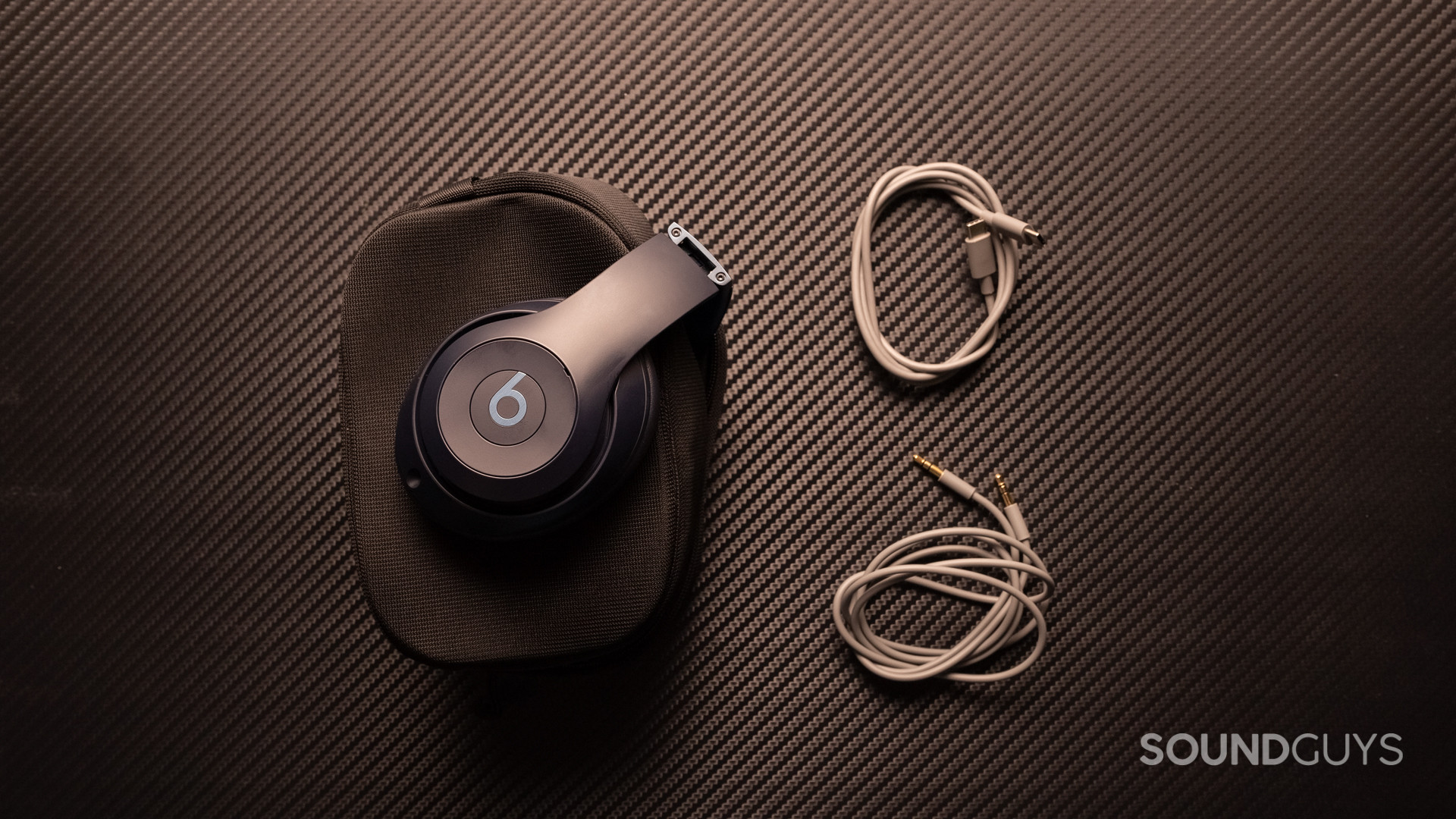
Surprisingly, the Sony WH-XB910N outdo the bass volume of the latest Beats Studio Pro ($349.99 at Amazon), which supplies a more reasonable low-end volume. While we prefer the touch controls on the Sony headphones, the Studio Pro provides you with USB-C listening modes and a headphone jack in addition to Bluetooth.
Frequently asked questions about the Sony WH-XB910N?
No, while both headphones share some features like app support, aesthetics, 360 Reality Audio, and codecs, WH-XB910N does not sound as good as either the WH-1000XM4 or WH-1000XM5. It’s also more cheaply constructed.
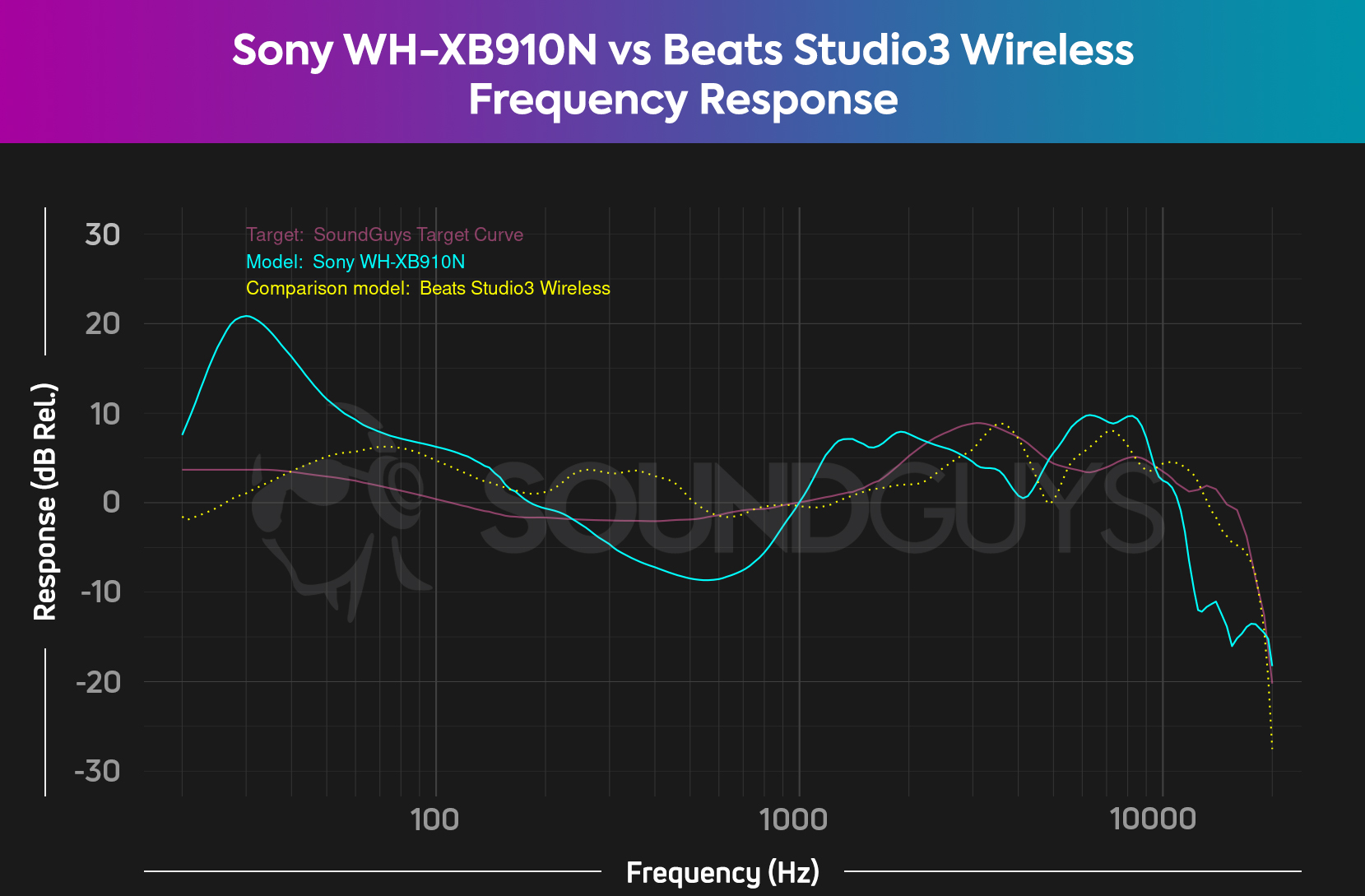
No, the Sony WH-XB910N is pretty different from Beats. What’s wild is that Beats is famous for its generous bass volume, but honestly, the Sony WH-XB910N has more bass than the ANC-capable Beats Studio3 Wireless. Instead, Beats has an extra volume around the low mids and bass, while Sony gave this headset a lot of added sub-bass volume. Granted, they are similar between the key bass frequencies of 70Hz and 150Hz. If you don’t mind EQ, the Beats might be easier to dial in a reasonably good sound on without the huge sub-bass of the Sony making it harder on the Beats Studio3 Wireless (for $169 at Amazon) you mainly would want to turn down 600Hz and below.
Both headsets have different design philosophies at work as well, such as style and buttons versus touch controls. Apple-owned Beats headphones only come with SBC and AAC, whereas Sony has the LDAC intended for Android users, too.
DSEE (which stands for Digital Sound Enhancement Engine) is a Sony digital processor that aims to improve your lossy audio by “filling in” the missing information at high frequencies.
Thank you for being part of our community. Read our Comment Policy before posting.